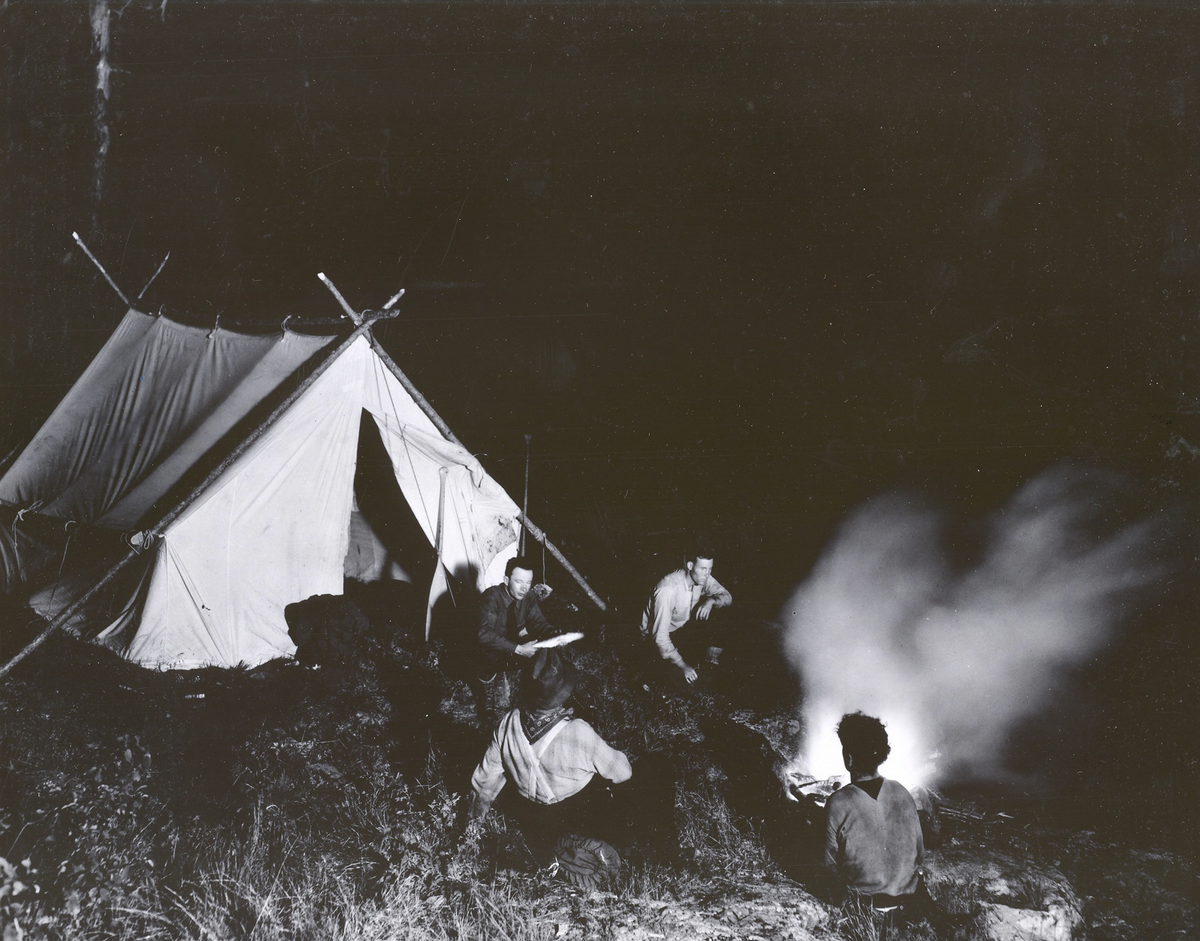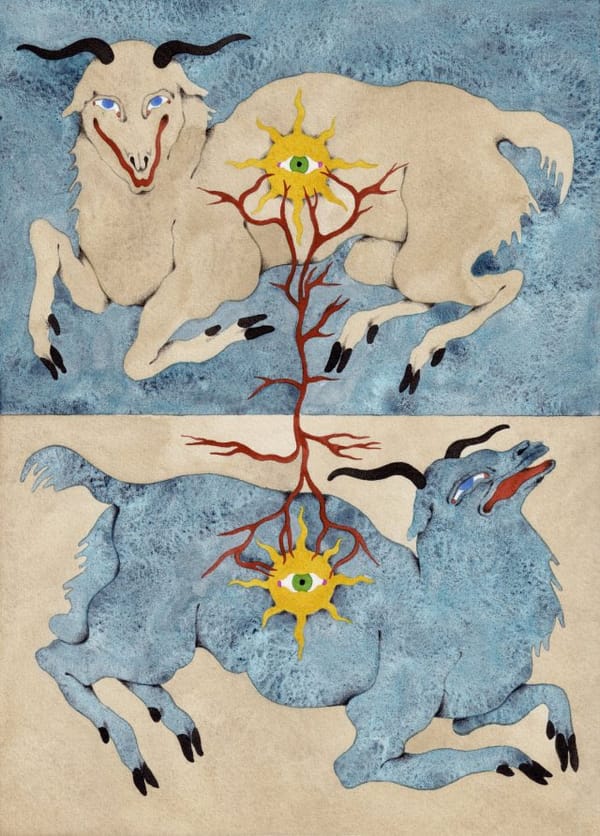Windigo

1.
“Anxiety is the only emotion that doesn’t deceive,” say some in the psychoanalytic tradition. This annoyed me when I first heard it. Anyone with anxiety knows it’s a room of funhouse mirrors. I look into the claim and begrudgingly agree; though anxiety may raise false scenarios, every other emotion is one you can sink into, drink in hand, Spotify playlist on blast. We don't do this with anxiety. There can be no catharsis. We want out.
How did it sneak into the club? It now piggybacks on the awe of horror and sci-fi to occupy center stage in more and more mainstream works. Oppenheimer. Black Mirror. Who willingly spends hours making themselves anxious? Millions of us.
2.
A windigo, or just Windigo, is an entity found in indigenous folklore throughout the American northeast. The answer to the question "is it a creature or a spirit?" is "yes." Its physical form has a heart made of ice, a buck skull for a head, and an insatiable hunger for flesh. Robin Wall Kimmerer speculates in Braiding Sweetgrass that its myth was inspired by those who grew too greedy and had to be banished after one too many offenses. European fur traders arriving in the 1600s and decimating wildlife in midwinter fueled it. Some linguists believe it comes from an older Algonquin word for "owl." Two central Osage characters in Killers have ominous visions of owls as whites kill off and rob their community.
This is a bit exceptional for the movie; Scorsese otherwise leans on what he knows (white mobsters) and forgets to flesh out the Osage characters enough. He does, however, show the fine mesh of the personal and the political that lies behind the progression of the whites’ cruelty. We see how their actions are part of a wider culture and how they still ultimately come down to “people doing stuff.” There are snapshots of the good life among it all: whites connecting with the land, indigenous people enjoying fast cars. Between this you see waypoints and forks in the road and how they choose wrong. All it takes to ruin things for everyone is a handful of people with exceptional greed and many others “just doing their jobs.”
3.
The trickiest thing about Windigo is how it affects our ability to treat it. It resembles a tumor with its own immune system, not letting us simply feel what we feel. It wants us to replace those feelings with bigger or better ones, always. Even if someone knows it’s important to feel things through, like anxiety or pain, they may choose to feel that of others instead – Hollywood kinds. Because it’s not your own versions that you’re feeling, you delay healing from them. No external drug heals this and that’s the only kind of drug our culture is good at making. We discard with a scoff the idea that any real remedies — gratitude, reciprocity, compassion, being okay with the way something is — are medicines with material effects. They aren’t material objects you can sell. We do this to ourselves the way we might work too much for others; in a selfless way, sure, but at times when what’s needed is not that kind of toil, and instead things like care and communication. Windigo looks like “more more more” even if this ups the dosage of a medicine until it’s poison.
Viewing history through too white a lens makes fertile soil for a certain self-flagellating prejudice: “We whites (or all humans) are doomed to be this way forever, greedy, self-serving, exceptional, alien, unable to be part of the web of reciprocity we’ve gotten ourselves cast out of.” No; Windigo is a sickness. Sicknesses can go away. The era of ignoring what other cultures can tell us about healing from it, thus avoiding the responsibility to heal from it, is coming to a forced and rapid end.





